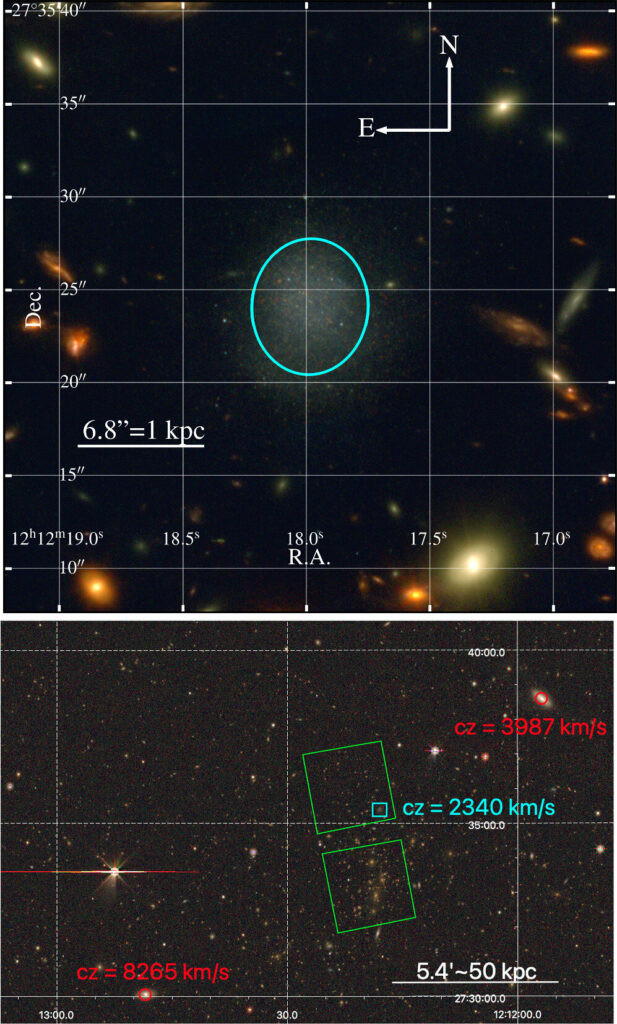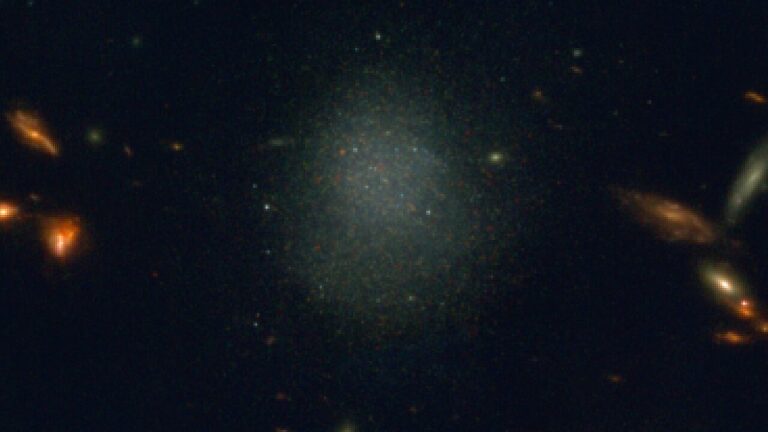Astronomical Team Unearths a Galaxy Defying Expected Existence
A group of astronomers, led by Tim Carleton, an Assistant Research Scientist at Arizona State University, has made an intriguing discovery. While conducting imaging with the James Webb Space Telescope, they unexpectedly came across a dwarf galaxy that was not their primary focus.
Galaxies, which consist of stars, planets, dust, gas, and dark matter, are held together by gravity. Dwarf galaxies, characterized by their small size and low luminosity, are the most abundant type in the universe. They typically contain fewer than 100 million stars, in contrast to the Milky Way, which boasts nearly 200 billion stars.
Recent observations of “ultra-diffuse galaxies,” a subset of dwarf galaxies, have raised questions about our current understanding of this population. These observations, which were beyond the scope of previous large spectroscopic surveys, suggest that there may be more to learn about dwarf galaxies.
In a recently published study, Carleton and his team were initially focused on studying a cluster of galaxies as part of the JWST Prime Extragalactic Areas for Reionization and Lensing Science (PEARLS) project. However, during their observations, they unexpectedly stumbled upon a dwarf galaxy named PEARLSDG. This dwarf galaxy appeared in some of the JWST images, despite not being the intended target. It was located slightly outside the main observation field, in an area of space where the team did not anticipate finding anything.
This serendipitous discovery highlights the vastness and complexity of the universe, reminding us that there is still much to uncover and explore.*
PEARLSDG defies the typical characteristics of a dwarf galaxy. Unlike most dwarf galaxies, it neither interacts with a neighboring galaxy nor undergoes star formation. This makes it a fascinating example of an isolated quiescent galaxy.
According to Carleton, these isolated quiescent dwarf galaxies have rarely been observed before, with only a few exceptions. Their existence challenges our current understanding of galaxy evolution, as they contradict our expectations. The discovery of PEARLSDG helps refine our theories on how galaxies form. Typically, dwarf galaxies that exist independently continue to generate new stars.
Previously, astronomers believed that isolated galaxies either continued to produce young stars or interacted with larger companion galaxies. However, this theory does not apply to PEARLSDG, which consists of an aging stellar population and does not engage in star formation.
In a surprising twist, the team’s JWST images reveal individual stars within PEARLSDG. These stars appear brighter in JWST wavelengths, making it one of the most distant galaxies where such stars can be observed with such precision. The luminosity of these stars enables astronomers to accurately measure its distance, which amounts to 98 million light-years.

Carleton, an assistant research scientist at the Beus Center for Cosmic Foundations in the School of Earth and Space Exploration at ASU, and the team utilized a diverse range of data for this study. The data included imaging data from JWST’s Near-InfraRed Camera (NIRCam), spectroscopic data from the DeVeney Optical Spectrograph on the Lowell Discovery Telescope in Flagstaff, Arizona, archival imaging from NASA’s Galex and Spitzer space telescopes, and ground-based imaging from the Sloan Digital Sky Survey and the Dark Energy Camera Legacy Survey.
The high angular resolution and sensitivity of JWST’s NIRCam allowed the team to pinpoint individual stars in this distant galaxy. Similar to cells coming into focus under a microscope, these observations provided a clear view of the components of PEARLSDG.
The identification of specific stars in the imaging was crucial in determining the distance of PEARLSDG. These stars possess a distinct intrinsic brightness, enabling the team to measure their apparent brightness with JWST and calculate their distance. Remarkably, these stars turned out to be among the most distant stars of their kind ever observed.
All the archival imaging data, captured across ultraviolet, optical, and infrared wavelengths, was consolidated to analyze the color of PEARLSDG. Newly formed stars exhibit a unique color signature, so the absence of such a signature indicated that PEARLSDG was not undergoing new star formation.
The DeVeney Spectrograph, located at the Lowell Discovery Telescope, disperses the light emitted by celestial objects into distinct components. This enables astronomers to meticulously examine the properties of these objects. For instance, by analyzing the spectroscopic data, scientists can decode the specific wavelength shift observed in features, which provides information about the motion of PEARLSDG. This phenomenon utilizes the same Doppler effect employed by radar guns to measure the speed of drivers on Arizona roads.
This crucially demonstrates that PEARLSDG is not connected to any other galaxy and is genuinely isolated. Furthermore, certain characteristics in the spectrum are sensitive to the presence of young stars. Therefore, the absence of these features further supports the findings from the imaging data, indicating the absence of young stars.
“This outcome was completely contrary to what people expected for a dwarf galaxy of this nature,” stated Carleton.
This discovery revolutionizes astronomers’ comprehension of galaxy formation and evolution. It suggests the potential existence of numerous isolated quiescent galaxies yet to be identified, and the James Webb Space Telescope (JWST) possesses the necessary tools to accomplish this task.
This article is republished from PhysORG under a Creative Commons license. Read the original article.
Do not forget to share your opinion with us to provide you with the best posts !




0 Comments